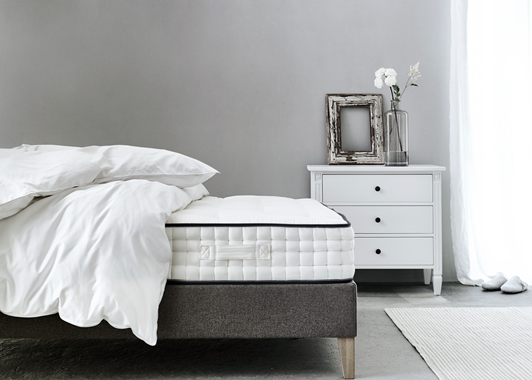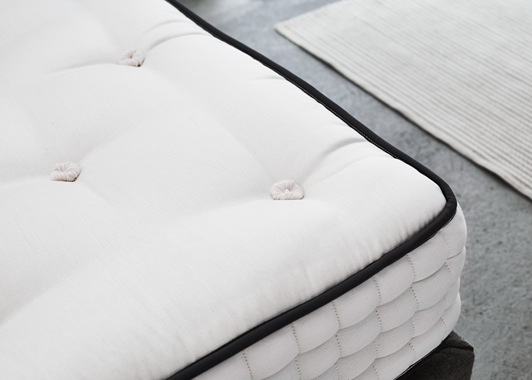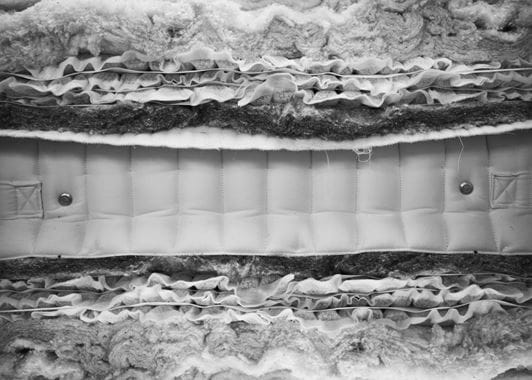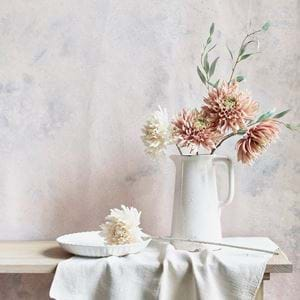A good night’s sleep: our mattress buying guide
A good night’s sleep: our mattress buying guide
When it comes to picking a mattress, there are a lot of choices out there. Pocket sprung or memory foam; natural materials or synthetic; firm, medium or soft…
So, we’ve put together this guide – to our own mattress, Barrington, and the other options out there – to help you figure out which one is just-right for you.
Find a comfy spot and make a cup of tea before you dive in – we’ve tried to keep it as short as possible, but there’s a lot you’ll need to know.
Let’s start with springs
Lots of mattresses are made using springs – it’s the making method that’s stood the test of time. (There’s memory foam too, but we’ll get on to that later.) And when it comes to springs, you’ve got two options: open (also known as traditional) springs and pocket springs.
Open springs
These are when the springs are all wired together into a frame. The problem with this is that they can’t move independently, and so can’t mould to your body. You’ll end up resting on your joints (your shoulders, your hips and your knees) rather than spreading the weight across your whole body, which can leave you feeling a bit achey.
It also means that you’ll feel every time the person you’re sleeping next to moves.
Open spring mattresses tend to be much less expensive though, so are a good choice for guest bedrooms.
Pocket springs
You can probably guess what the difference is here – it’s in the name. Unlike open springs, each pocket spring sits inside its own fabric ‘pocket’. This means they can rise and fall individually to support your body and spread your weight evenly. Think cloud-like comfort – a phrase that’s often used with pocket springs, for good reason.
Spring count
In short, the more springs there are in a pocket-sprung mattress, the better. They’re not the only thing that matters of course, the quality of the other fillings is just as important. But, the more springs you have, the more they can fit around you. Which brings us on to…
High-definition springs
These are essentially just very small, flatter versions of pocket springs. You’ll always find them together with bigger pocket springs, because you need these to provide tension and strength. You couldn’t have a mattress made entirely of high-definition springs because it would be much too soft, but add them in around pocket springs and you’ll have even more tailored support.
What about memory foam?
Memory foam responds to the heat of your body and softens to your shape. It then hardens again when it cools down, which means you’ll always have a mattress that fits your contours. But, it also keeps hold of heat and can get uncomfortably warm – that’s the biggest downfall of memory foam.
You’ve got a couple of options if you’d like a memory foam mattress without the heat. There’s gel – a relatively recent invention, beads of gel are added to the memory foam to conduct the heat away. And there’s latex. It’s a natural foam, so uses less chemicals and can ‘breathe’ (it lets the air circulate) more, but these mattresses tend to be much firmer.
What else goes into a mattress?
Aside from springs or memory foam, most mattresses will also have a few layers of padding. The materials used for this can be natural or manmade – here are the most common, and the pros and cons of each to help you pick.
Natural materials – wool, cotton, silk, hemp, coir and horsehair
The pros – the thing that most natural materials have in common is that they’re breathable, so they won’t make you too hot. They’re all also good at wicking away moisture, are hypoallergenic (even wool and horsehair, which are steam-cleaned to remove all the proteins that might make you have an allergic reaction), and strong. Wool and horsehair also have the added advantage of being insulating as well as breathable – they’ll keep you warm on a cold night, but not too warm during the summer.
Natural materials can be roughly divided into two categories: cushioning materials and supportive ones. You’ll usually find cotton, silk or wool – the cushioning ones – in the top layer of your mattress because they’re soft and springy. Hemp, horsehair and coir are usually further down. They’re a bit coarser but denser, even stronger and still springy, so create a durable, supportive core for the mattress.
The cons – there really aren’t many. Natural materials tend to be a little more expensive, and of course some come from animals, so aren’t suitable if you’re vegan.
Synthetic materials – polyester and polyurethane
The pros – these materials are entirely manmade, so are great for those looking to avoid materials that come from animals. You’ll also find them in more affordable mattresses (again, perfect for guest bedrooms). And they can be as strong and durable as natural materials.
The cons – breathability is the big downside to synthetic materials. Air can’t pass through in the same way and you’ll likely feel too hot, even on a cold night. They also tend to hold on to smells more than natural materials. And, of course, there are a lot of chemical involved in making them.
A note on mattress toppers
If you’ve got a mattress that’s just-right for you, then you shouldn’t need a mattress topper. They really come into their own when your mattress is less than perfect, adding extra softness or support. That said, even with a brilliant mattress, some people just like the extra duvet-like cushioning of a feather and down topper, or the cosiness of a bit more wool.
Firm, medium, medium-firm…
The firmness of a mattress is – in the case of sprung mattresses anyway – decided by the tension of the springs. You won’t find any more springs in a firm mattress than you would in the equivalent medium or soft one, they’re just more tightly wound which means they’re harder to compress.
What feels firm to one person though, can feel soft to the next, so it’s important to give your mattress a test run in store first. It’s a bit of delicate subject, but it’s really down to your weight. Lighter people will need a softer mattress, and heavier people will need a firmer one. And, despite what’s often said, a firm mattress isn’t necessarily better – even if you have back problems.
When you lie down on a mattress, you should feel that it supports the small of your back, behind you knees and even your ankles. And when you turn to the side, your shoulders and hips should sink in enough that the mattress fits into your waist. (Your pillow will do the job of supporting your neck, but if you’re a front-sleeper, you might want to consider going without.)
This way, you won’t be putting your joints under pressure and your spine will be in a happy alignment. A good test is to try and fit your hand between your lower back and the mattress. If it slips in easily, the mattress is too firm; if it’s very difficult to do, it’s probably too soft.
The extras
Tufting
Those dimples and buttons you see on the top of a sprung mattress are created when it’s sewn together. They’re an integral part of its structure. Done properly, you shouldn’t feel them when you’re lying down.
Vents
These are another feature of sprung mattresses, and are there to let out any moisture that builds up inside.
Handles
You’ll need to flip and rotate most mattresses regularly so you don’t compress the fillings too much in one spot. Fabric handles stitched onto the sides will therefore come in very handy.
Our mattress
You might’ve heard us mention ‘edited choice’ before. Well that’s just what our mattress collection is. Too much choice can be overwhelming, so we found the very best mattress we could and decided to just offer that one. It comes in two firmness levels – firm and medium – because we’ve found those are the two most of you prefer (soft tends to be a bit too, well, soft for most people). And we source the materials from a farm in Yorkshire and make the mattresses in a workshop nearby.
You can find out more about what goes into our mattress on our website and in-store, where you can also test it out and see if it’s the one for you.








